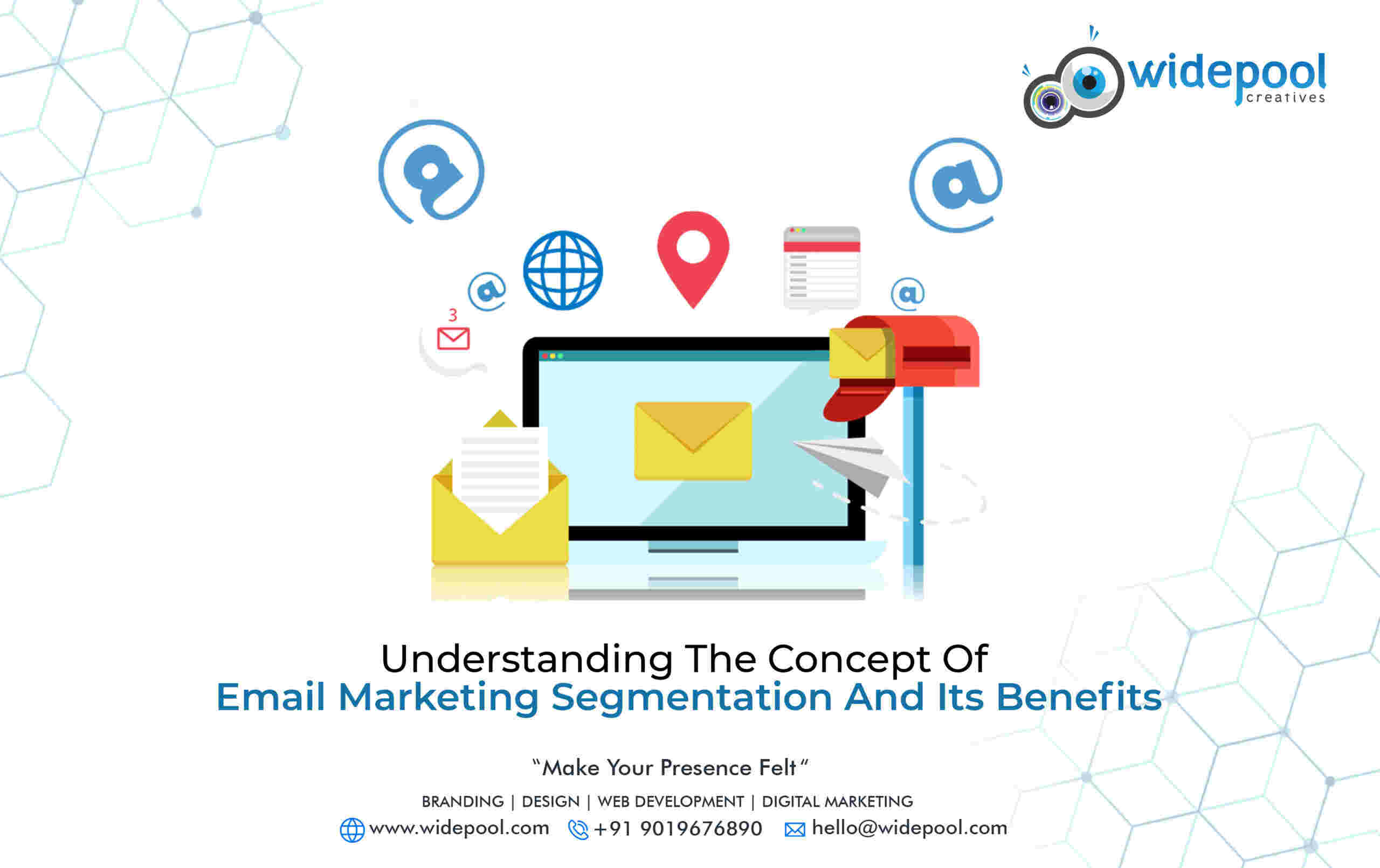Email Marketing Segmentation and Its Benefits
Some Speedy & Simple Email Marketing Segmentation Strategies to Follow
Avail of Widepool’s Effective Marketing Services
In today’s digital age, email marketing continues to be a powerful tool for businesses to connect with their audience, drive engagement, and boost conversions. However, with the increasing volume of emails flooding in the inboxes, it’s crucial to tailor your messages to specific segments of your audience. This is where email marketing segmentation strategies play a vital role. Let us delve deeper into the concept of email marketing segmentation and its benefits.
Email Marketing Segmentation and Its Benefits
By dividing your subscriber list into distinct groups based on demographics, behaviour, preferences, or other criteria, you can craft highly personalized and relevant content that resonates with your recipients that refers to email marketing segmentation. There are 4 broad types of email marketing segmentation including demographic segmentation, behavioural segmentation, psychographic segmentation, and purchase history segmentation. Now, let’s look into the key benefits of email marketing segmentation:
- Increased Relevance: By delivering personalized and relevant content to your subscribers, email marketing segmentation ensures that your messages resonate with their specific interests, leading to higher engagement and conversion rates.
- Improved Customer Experience: Segmentation allows you to create targeted email campaigns that address the unique needs and preferences of your subscribers. This level of personalization enhances the overall customer experience, fostering stronger relationships and customer loyalty.
- Enhanced ROI: By delivering highly targeted emails, businesses witness improved return on investment (ROI). Segmenting your subscriber list helps you allocate your marketing resources efficiently, ensuring that your messages reach the right audience at the right time.
- Higher Conversion Rates: Relevant and personalized emails have a greater chance of converting subscribers into customers. Email marketing segmentation allows you to deliver tailored messages that resonate with each segment, resulting in higher conversion rates and sales.
Some Speedy & Simple Email Marketing Segmentation Strategies to Follow
Email marketing segmentation is a powerful technique that allows businesses to tailor their messages to specific groups of subscribers. Here are some speedy & simple segmentation strategies that you can implement today to enhance your email marketing campaigns:
Demographics
Segment your audience based on age, gender, location, occupation, or other demographic data to personalize your content effectively.
Surveys/Quizzes Results
Use the insights gained from surveys or quizzes to segment your subscribers based on their preferences, interests, or needs.
Use Engagement Using Emails
Analyse open rates, click-through rates, and other engagement metrics to identify highly engaged subscribers and create segments for targeted campaigns.
Geographical Location or Region
Segment your audience based on their geographical location to deliver location-specific promotions, events, or content.
Past Buys
Divide your subscribers into segments based on their previous purchase history to offer personalized product recommendations or relevant upsells.
Past Spending Habits
Segment your audience based on their spending habits to tailor your emails with exclusive offers, rewards, or loyalty programs.
Position of the Users in Sales Funnel
Create segments based on where subscribers are in the sales funnel (e.g., leads, prospects, customers) to send targeted emails that nurture them through the buying process.
Website Browsing Behaviour
Track subscribers’ interactions with your website and segment them based on their browsing behaviour, such as product page visits or content downloads.
Time Since Last Consumption
Segment your audience based on the time elapsed since their last purchase to re-engage dormant customers with tailored reactivation campaigns.
Personal Interest(s)
Use data from subscriber preferences or behaviour to create segments that align with their specific interests or hobbies, allowing for highly targeted content.
Shopping Carts Being Abandoned
Target subscribers who have abandoned their shopping carts with personalized emails offering incentives, recommendations, or reminders to complete their purchase.
B2B Job Roles
Segment your B2B audience based on their job roles, industry, or company size to deliver industry-specific content or solutions that cater to their needs.
Entry Source or Point
Segment subscribers based on the source or entry point through which they joined your email list, allowing you to deliver relevant content or offers related to their initial interaction.
Buying History
Analyse the frequency or recency of purchases to segment your audience. You can create campaigns that focus on re-engagement, cross-selling, or upselling opportunities.
Avail of Widepool’s Effective Marketing Services
Now that we have understood about email marketing segmentation and its benefits, we know that it’s a powerful strategy that enables businesses to deliver personalized and relevant content to their subscribers. So, by leveraging demographic, behavioural, psychographic, and purchase history data, you (as a business) can connect with your audience better. Avail of the exemplary services given by Widepool. You can secure a top place for your business in the online web world.

